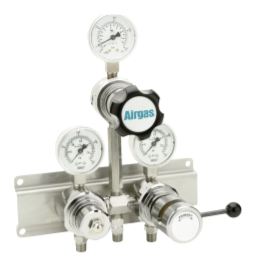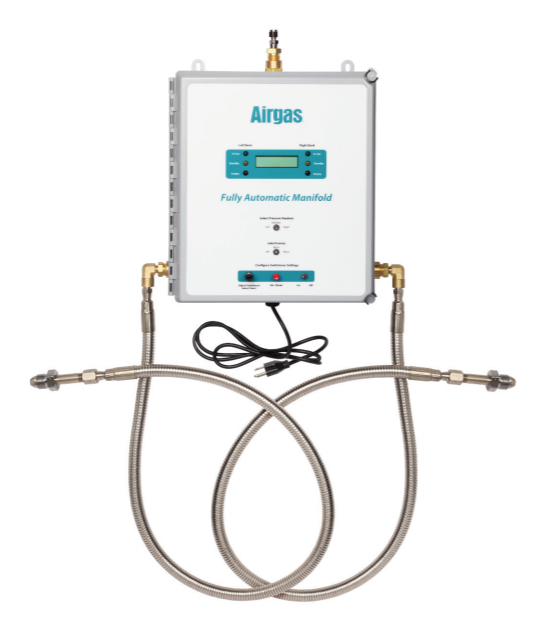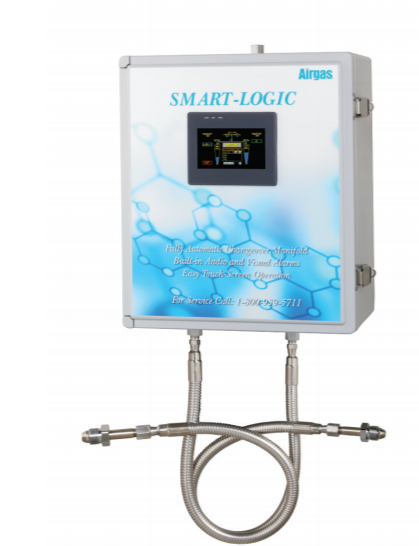Modern Manifold Management: What You Don't Know Can Ruin You
If you’re like most people, you have seen a gas manifold and said to yourself, “What the heck is that thing?”
If you’re a clinical lab manager, however, you see a manifold and you see an integral component to the “health” of your lab, as it’s through the manifold where you regulate the supply of critical gases (such as LN2 and CO2) into your facility.
And while most lab facility manifolds have some level of automation, there are still a myriad of ways things can go awry, and the damage can be immeasurable.
The last thing a lab manager wants to do is explain how millions of dollars in research were ruined because of microbial cross contamination… or explain how a customer’s IVF cultures were ruined due to temperature drop… all because of a faulty or filthy manifold, a relatively simple piece of hardware with an incredibly important job.
In addition to preparing for external disasters, facility and lab operations teams also need to keep a pulse on internal systems that can have equally devastating consequences when things go awry.
Digital manifolds: your best bet?
There are several differences between an analog manifold and a digital one. To keep things simple, we’ll focus on one specific example (and critical process) to explain the basic difference between a standard, analog gas manifold system for your laboratory and a fully automatic digital one: switching between tanks connected to the manifold.
With the analog approach, you have to rely on, for lack of a better term, “trust” to switch tanks. There’s no reporting mechanism, so it doesn’t alert you whether a given switch-over was a successful (no big deal) or failed (a HUGE deal). In the event of a failure, you’ll only learn about it when you walk back into the lab and no gas is going into your equipment.
With a digital system, however, you have the opportunity to receive detailed information of what is going on with the manifold: what are the in/out pressures, for example; sometimes even levels can be included.
When an analog manifold fails, has a switching system glitch, or its measuring systems fail… How will you know? What can you do next? What happens if the issue is not resolved promptly: Will samples and resources spoil or fail? Will the health of your staff be in jeopardy?
But with digital gas manifold systems, management is both automated and more “proactive,” and it's far easier for a layperson to manage, as well. These benefits are more fully realized when integrating an additional facility and equipment monitoring service. Functioning as an additional safety net, you can have peace-of-mind that your manifolds are always operating properly and can make a world of difference. (And for old-school analog manifolds, too.)
Read more about Equipment Monitoring in our eBook: The Ultimate Guide to Lab Equipment Monitoring
Note that this is not a theoretical position, either. At XiltriX, we have extensive experience in monitoring and assuring the systems health of a multitude of manifolds servicing the modern lab. Here are just three:

Option 1 - Economy
This is a semi-automatic changeover with no special features. It can deliver up to 125 psig (see specs). (We’re able to install 0-600 psig pressure switch gauges onto this as well.)

Option 2 - Fully Automatic High Purity Changeover
This manifold has a multitude of features that can be monitored (see specs), and clients can open up the box to tie directly into pressure switches.

Option 3 - Fully Automatic PLC-Based Changeover
In addition to having many of the features of option 2 (see specs), this manifold provides a set of dry contacts to connect to (in the top right of the changeover).
What to look for in facility monitoring and manifolds
With the sensitivity of materials, samples, and more in most labs, monitoring of “manifold health” is a full-time job. It only takes a moment for a decrease in CO2 or a change in O2 to potentially cause major issues.
So even if your lab isn’t “always on,” your monitoring system has to be, and your manifold should be part of it. This is why, in addition to a 24/7 facility monitoring service, most lab managers also have a 24/7 staffing plan so that, in the event of an emergency, someone will be on-hand or online to quickly resolve the issue.
Even if you’re using digital manifold systems because they’re “always on,” having a safety net is critical. For instance, if a digital manifold system goes down and its reporting goes offline, how will you be notified while there’s still time?
By integrating manifolds with a 24/7 lab facility monitoring-as-a-service all of your bases are covered. From promptly alerting of system errors, such as leaks and drops in gas pressure, to providing ongoing, reliable support and reporting of everything going on in your facilities.
Learn more about everything there is to know about facility monitoring in our eBook:


